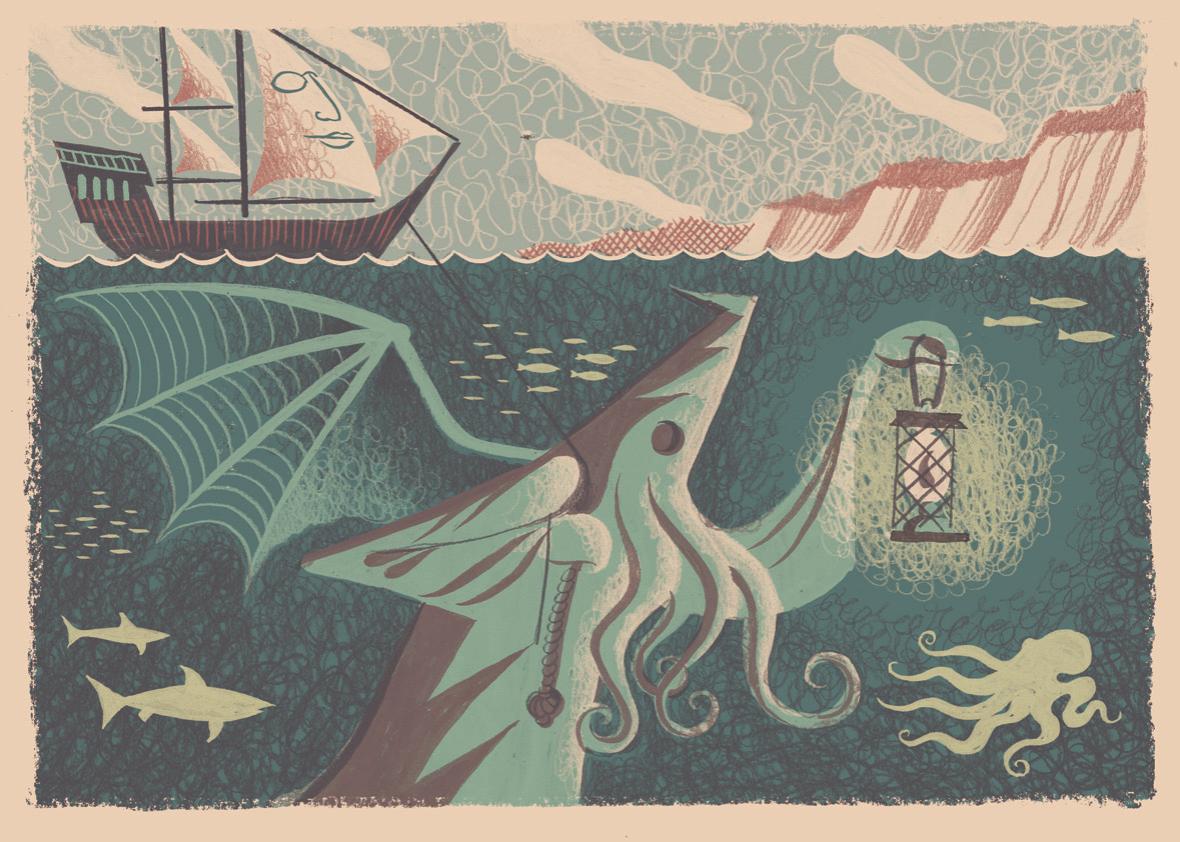Table of Contents
ToggleIntroduction
The Ballad of Black Tom Summary By Victor Lavalle Victor LaValle’s novella “The Ballad of Black Tom” was initially released in 2016. It is a contemporary adaptation of the notorious 1929 short story “The Horror at Red Hook,” written by H.P. Lovecraft and criticized for its overt racism. In addition to honoring Lovecraft’s contributions to the horror genre, LaValle’s novella turns the original work into a compelling and perceptive story that addresses issues of race, terror, and social prejudice.
The story combines historical reflection, science fiction, and horror. It tells the tale of Charles Thomas Tester, a Black man in the 1920s who lived in Harlem. LaValle examines the terrible effects of racism and the conflict between a person’s intimate experience of systematic oppression and their fear of the unknown via the prism of cosmic horror.
Plot Summary
“The Ballad of Black Tom” opens with Charles Thomas Tester, a Black man attempting to make ends meet in Harlem’s difficult social and economic circumstances. Tester is a gifted musician, but in order to provide for his family, his circumstances force him into petty criminality. He strikes a bargain with Mr. Robert Suydam, a mysterious white man with an odd request. Suydam offers Tester a sizable amount in exchange for delivering a rare occult book to a place in Brooklyn.
Tester comes across strange horrors that go much beyond the everyday world while running this errand. Tester unintentionally joins an old and terrifying cult that worships an incomprehensible, otherworldly entity because of the book’s facts about the occult. In the Lovecraftian mythos, the creature that the cult worships is a cosmic being that symbolizes the chaotic and destructive forces of the cosmos, which are incomprehensible to humans.
Read more
Tester’s involvement with the cult leads to tragic consequences. As he becomes more deeply entangled in the mysteries of the occult, his world begins to collapse. Suydam, whose motivations are not entirely clear at first, eventually reveals that he too is a part of this dark network, and his connection to Tester is part of a larger scheme that centers on the invocation of cosmic horror.
In the end, Tester’s personal tragedy intertwines with a greater cosmic reckoning. His life, marked by personal loss and the pervasive forces of racism, culminates in a moment of horrific understanding as he confronts the truth of the power that he has unwittingly unleashed. Ultimately, Tester’s fate is a poignant reflection of the intersection of personal horror and cosmic nihilism, with the backdrop of early 20th-century racial violence.

Themes in “The Ballad of Black Tom”
1 Racism and Social Injustice: One of the central themes of “The Ballad of Black Tom” is the pervasive and destructive impact of racism. LaValle recontextualizes the experience of Black people in the early 20th century by placing Charles Thomas Tester in a world that is not only hostile to him because of his race but also indifferent to the violence he suffers. The story is deeply concerned with the structural inequality of society and how it forces individuals like Tester into choices that threaten their survival. Tester’s experiences with the police, his encounters with white characters like Mr. Suydam, and the societal constraints that limit his opportunities all serve as reflections of the harsh realities of racial discrimination.
The novella also critiques the toxic and dehumanizing ideologies that underpinned Lovecraft’s own work, which was often laced with racist beliefs. By rewriting the story from Tester’s perspective, LaValle gives a voice to the oppressed, showing how racial animus and hatred fuel much of the terror in the story. Tester’s life and fate are shaped by the systemic racism that restricts his agency, rendering him both a victim and an instrument of the horror he faces.
2 Cosmic Horror and the Unknown: True to the genre of cosmic horror, LaValle’s novella is grounded in the idea that humanity is insignificant in the grand scale of the universe. In “The Ballad of Black Tom,” this theme is not only present in the form of the monstrous entities Tester encounters but also in the existential horror that arises from the realization that the universe is chaotic and indifferent. The cosmic entities Tester comes into contact with—representing ancient and incomprehensible powers—symbolize a world where human life is just a fleeting and inconsequential event.
The terror of the unknown is represented in a variety of ways, from the obscure occult book to the mysterious cult that is trying to summon beings far beyond human understanding. As Tester confronts these cosmic forces, he is forced to acknowledge the fragility of his existence and the vastness of the forces arrayed against him. In a world governed by forces he cannot control or even fully comprehend, Tester becomes a pawn in a cosmic game.
3 Identity and Self-Perception: Another key theme in the novella is the question of identity and how it is shaped by external forces. Tester’s Black identity is a defining aspect of his character, influencing both how he sees the world and how the world sees him. In many ways, Tester’s quest for survival is entangled with his struggle to define himself in a society that views him as inferior and subhuman.
Throughout the novella, Tester grapples with the internalized racism that is a product of the environment in which he lives. His choice to engage in criminal activity is a response to his lack of opportunity, and his interactions with white characters like Suydam serve as a constant reminder of his marginalized status. The violence and horror Tester experiences are both personal and political, representing the ways in which identity, race, and power intersect in a society that privileges whiteness and demonizes Blackness.
Read more
4 Power and Control: Power is a pervasive theme in the novella, manifesting both in the social order and in the supernatural. The systemic racism that controls much of Tester’s life is one manifestation of power, as it limits his choices and diminishes his agency. However, Tester also seeks power in other forms. His involvement with the occult and his encounters with Suydam reveal how the desire for control can lead to disastrous outcomes. The power of the occult, much like the power of racial hierarchies, is ultimately corrupting and destructive.
Tester’s eventual realization that the cult is manipulating him for their own ends reflects the corrupting nature of power and control. The dark forces he encounters show that the pursuit of power—whether through criminal means or through the invocation of otherworldly beings—often comes with a price, and the cost is often one’s humanity.

5 The Intersection of Personal and Cosmic Horror: LaValle’s novella is unique in how it blends personal, social, and cosmic horror into one narrative. The story starts with very real and grounded fears—those of racism, poverty, and alienation—and slowly shifts into a world of supernatural terror. This intersection of personal and cosmic horror highlights the story’s larger philosophical exploration of existence. The oppression Tester faces is both a real-world issue and a reflection of the larger, indifferent cosmos that governs the universe.
In this way, LaValle illustrates how personal horror, rooted in the lived experiences of marginalized individuals, is not separate from the vast cosmic forces that create a sense of futility and fear. The horrors of racial violence and societal exclusion are deeply connected to the cosmic horrors that Tester faces, making the novella a unique commentary on both the personal and the universal.
Read more
FAQ
1 What inspired Victor LaValle to write “The Ballad of Black Tom”?
LaValle was inspired to write the novella as a response to the racism in H.P. Lovecraft’s work, particularly in “The Horror at Red Hook.” Lovecraft’s stories often included racial stereotypes and prejudice, and LaValle wanted to reimagine Lovecraftian horror from the perspective of a Black protagonist. By doing so, he sought to both honor and critique Lovecraft’s legacy.
2 Is “The Ballad of Black Tom” part of the Cthulhu Mythos?
Yes, “The Ballad of Black Tom” is set within the Cthulhu Mythos, which is a shared universe of horror created by H.P. Lovecraft. The novella references several elements from Lovecraft’s stories, including cosmic entities and the occult, while also adding LaValle’s own spin on these elements.
3 How does LaValle’s portrayal of racism differ from Lovecraft’s?
While Lovecraft’s works are often criticized for their overt racism and xenophobia, LaValle’s novella directly confronts these issues. LaValle uses the structure of Lovecraftian horror to explore the impact of systemic racism, offering a more empathetic and critical lens on the themes of fear, alienation, and power. In doing so, he gives a voice to marginalized characters who were often excluded from Lovecraft’s narratives.
4 What is the significance of the title “The Ballad of Black Tom”?
The title references the central character, Charles Thomas Tester, and the story’s exploration of his life and struggles. “Ballad” evokes the idea of a tragic, poetic story, and “Black Tom” refers to the character’s nickname, highlighting both his identity and the narrative’s exploration of race and power.
5 What is the central message of “The Ballad of Black Tom”?
The novella seeks to highlight the intersection of racial injustice and cosmic horror. By blending personal, social, and supernatural terror, LaValle explores the dehumanizing effects of racism and the existential fear brought on by confronting the vast, indifferent forces of the universe. The novella ultimately asks readers to reflect on the ways in which identity, power, and systemic oppression shape personal experiences and social realities.
Read more

















